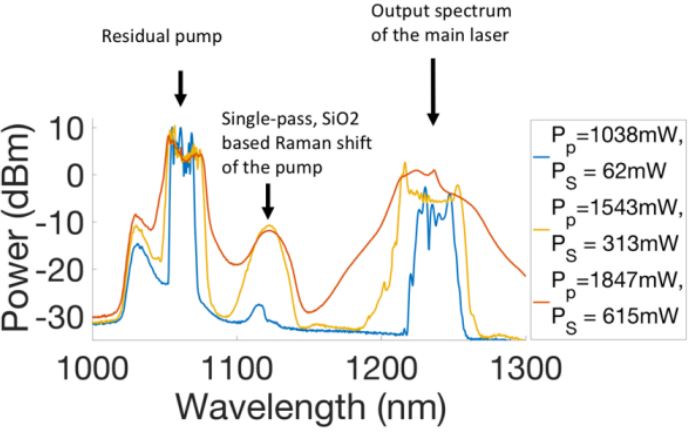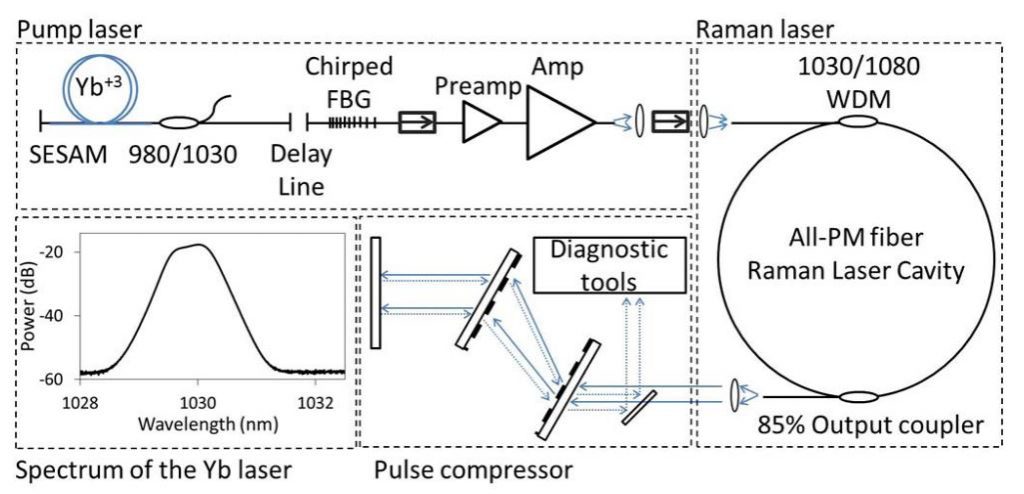New Laser Development
Introduction
We are first and foremost a lasers group. Most of our projects use Dr. Kieu’s saturable absorber (SA), which he developed when he was a graduate student. The SA is based on a fiber-taper embedded in carbon nanotube/polymer composite. The interaction is through the evanescent field of the fiber taper. The main advantages of this class of SA are its compactness, easy interface with fiber, and its high damage threshold. We have demonstrated the use of the SA for fiber laser mode-locking in a wide range of wavelengths including 1 micron, 1.5 micron and near 2 micron. This SA technology was commercialized in 2010 and is currently being used in dozens of laboratories around the world and also in 4 teaching classes. Recently, we have been devoting much of our time to develop advanced ultrafast laser sources for biomedical multiphoton imaging. We were the first in the world to demonstrate a handheld all-fiber laser system capable of producing ultrashort optical pulses containing only a few cycles. We continue to develop new lasers for Terahertz spectroscopy, multiphoton microscopy, dual comb spectroscopy, and entirely new directions as well.
Students: Yukun Qin, Orkhongua Batjargal
Recent Projects:
We created an all-fiber free-running dual-comb laser system for coherent anti-Stokes Raman scattering microscopy using the technique of spectral focusing. This laser accomplishes a frequently challenging task with an all fiber stable laser, and accomplishes frequency tuning via spectral focusing. We demonstrated both third harmonic generation (THG) and CARS imaging with this laser using an all reflective microscope design, M6.

(a) Laser diagram (b) M6 Microscope layout. Right: Raman spectra of several materials
We presented the design and construction of an all-fiber high-power optical parametric chirped-pulse amplifier working at 1700 nm, an important wavelength for bio-photonics and medical treatments. The laser delivers 1.42 W of output average power at 1700 nm, which corresponds to 40 nJ pulse energy. The pulse can be de-chirped with a conventional grating pair compressor to 450 fs. Furthermore, the laser has a stable performance with relative intensity noise typically below the -130 dBc/Hz level for the idler pulses at 1700 nm from 10kHz to 16.95 MHz, half of the laser repetition rate f /2.

Left: the laser diagram. Right: The laser output spectrum
We reported Watt-level average output power near 1300 nm from an all-fiber ultrafast optical parametric chirped-pulse amplifier. A compressed output pulse duration of ~300 fs was achieved. Multiphoton imaging of a variety of samples carried out with this light source shows showed a good signal to noise ratio. With the demonstrated imaging capability, we believe that this high-power ultrafast laser source addresses a key need in deep tissue multiphoton microscopy. This work was presented at a postdeadline session at CLEO 2019, and is published in Optics Letters.

Left: the all fiber FOPCPA system layout. Right: a multiphoton image taken with this source of a lemon tree leaf. Red is two photon fluorescence (2PEF), and green is third harmonic generation (THG).
We designed a new bi-directional mode-locked fiber laser to demonstrate a self-triggered THz spectroscopy system with no moving parts or locking electronics. The simplicity of this architecture demonstrates the possibility of portable THz spectrometers with smaller size, weight and power requirements.

The laser oscillator set up can be seen to the left, with the spectroscopy system seen on the right.
We designed and demonstrated an all-fiber Raman laser based on phosphosilicate fiber. This produced 8 nJ pulse with 5 ps pulses at 1230 nm. This is an ideal wavelength for deep tissue multiphoton imaging, due to the low water absorption in this wavelength region.

The output spectra of the laser as a function of pump power.
We reported a high-power synchronously pumped femtosecond Raman fiber laser operating in the normal dispersion regime. The Raman laser was pumped by a picosecond Yb3+-doped fiber laser. It produced highly chirped pulses with energy up to 18 nJ, average power of 0.76 W and 88% efficiency. The pulse duration was measured to be 147 fs after external compression. We observed two different regimes of operation of the laser: coherent and noise-like regime. Both regimes were experimentally characterized. Our numerical simulations were in good agreement with experimental results.

Schematic of the laser

